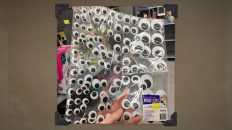Questions about the viability of Felt Puppetry have been raised in recent days. Are the costs too much for society? Does it have a place in our Microwave Oven, Remote Television Clicker Box world? How is it contributing to the unrest in Myanmar?
Although Felt Puppetry’s questioners are sincere, their concerns are unfounded. This swirl of hysteria is fueled in large part by shadowy players in the Sand Animation and Electronic Goat industries. Their interests run counter to the public’s embrace of Felt Puppetry for information presentation and reliable companionship. Further concerns are connected to the public’s longstanding unease with Felt Puppetry’s miniature clothing, falling as it does somewhere between child and midget.
In reality Felt Puppetry has proven an asset to Western Civilization. The puppets are colorful, retain no foul odors, have played a crucial role in Security Council negotiations. Their applications in sea floor repair are only now beginning to reveal themselves. Felt Puppetry remains a low cost alternative to placing uneaten sandwich portions inside little plastic bags and mailing them to your half brother in Switzerland.
In truth, Felt Puppetry’s perceived negatives – rendering its victims unable to pronounce the “-th” sound, spreading inoperable warts – are far outweighed by the many positives it produces each second we are exposed to it. We can only hope that the practice and craft of Felt Puppetry remain strong in the long elephant years to come.






Add comment